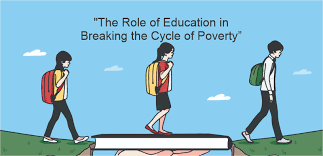
In today’s world, education should be the great equaliser, yet the stark disparities between rural and urban educational experiences reveal a troubling reality.
In rural communities, achieving five O Levels often carries more weight than the same accomplishment in urban areas.
This discrepancy is not merely about grades on paper; it reflects a systemic inequality that shapes lives and futures.
Consider the daily routine of a child in a rural setting. They rise before dawn, at 3 a.m., to tend to the family farm.
After an already long day of labour, they rush to school, often far from home, only to return in the evening, exhausted and burdened with chores.
With no access to electricity, their study time is limited and fraught with challenges. In stark contrast, children in urban boarding schools benefit from structured environments, dedicated study sessions, resources, and support systems that facilitate their learning.
This disparity in educational environments is not just an inconvenience; it has profound implications. When a child from a rural area struggles academically due to these circumstances, the repercussions can be devastating.
Failure in education can lead to cycles of poverty, substance abuse, and, for girls, increased vulnerability to gender-based violence and early pregnancies.
- More woes for suspended Cottco boss
- News in depth: Zimbabweans choke under weight of worsening service delivery failures
- Former MDC MP in trouble for insulting police
- Antipas scoops monthly PSL awards
Keep Reading
Yet, we often focus on treating the symptoms of these issues rather than addressing their root causes.
Many rural children do not see the value of education because they lack role models who have successfully navigated the educational system.
For them, the future often looks like becoming an artisanal miner or marrying into that lifestyle.
This limited vision is reinforced by a lack of exposure to diverse career paths and success stories.
If more individuals from these communities who have excelled in various educational disciplines returned to share their experiences, they could inspire the next generation to pursue their dreams.
Bridging the educational gap between rural and urban societies is a critical endeavor for fostering equitable development and opportunity within a country.
This disparity often manifests in unequal access to quality resources, infrastructure, qualified teachers, and technological advancements, disadvantaging students in rural areas.
Countries that have made strides in narrowing this gap have often implemented multifaceted strategies, including targeted funding for rural schools, incentives for teachers to work in underserved areas, investments in digital infrastructure to facilitate e-learning, and the establishment of well-resourced boarding schools or transportation systems to improve access.
Furthermore, community involvement and tailored curricula that address the specific needs and contexts of rural populations have proven effective.
Unfortunately, Zimbabwe is significantly lagging in its efforts to bridge this educational divide.
Numerous reports indicate a stark contrast in educational outcomes and resources between urban and rural schools.
Rural schools often suffer from dilapidated infrastructure, a shortage of qualified teachers who are often demotivated by poor remuneration and working conditions, inadequate learning materials, and limited or no access to technology and internet connectivity.
Financial constraints faced by rural families further exacerbate the issue, hindering their ability to afford school fees, uniforms, and learning resources.
Consequently, completion rates and academic performance in rural areas consistently fall behind urban averages, perpetuating a cycle of disadvantage.
While policies aimed at equitable access exist on paper, their effective implementation is hampered by underfunding, logistical challenges, and a lack of targeted interventions to address the unique needs of rural schools and communities.
In contrast, several countries offer examples of more successful approaches.
For instance, China has invested heavily in rural education through initiatives like Project 211 and Project 985, which, while primarily focused on elite universities, have also led to improvements in overall educational infrastructure and teacher training that indirectly benefit rural areas.
Furthermore, their targeted programs for rural schools, including increased funding and the deployment of qualified teachers, have shown some progress in narrowing the gap, although disparities persist.
Other nations, like Finland, prioritize equitable resource allocation across all schools, regardless of location, ensuring comparable quality of education.
They invest heavily in teacher training and professional development and leverage technology to provide learning opportunities in remote areas.
South Korea has also made significant strides through consistent investment in infrastructure and technology, coupled with policies aimed at reducing disparities in teacher quality between urban and rural schools.
To truly bridge the educational gap, we must begin by improving infrastructure.
Investing in transportation and establishing more local schools can significantly alleviate the burdens faced by rural students.
When children have access to schools closer to home, they can devote more time to studies instead of spending hours traveling.
I had a privilege to visit Zvishavane in December and I was pleased to see that primary school children wait for the bus that starts carrying people around 4am and they would be carried free of charge.
The only problem was when the bus is full the driver would leave them behind thus they would end up walking a long distance to school some would even go back home.
To be frank the students were carried free of charge, this inspired me a lot that if some areas here in Zimbabwe in remote areas did the same our education system would be top tier.
We also need to embrace flexible learning models that consider the realities of rural life.
Options like evening classes or alternative education pathways would acknowledge and accommodate students' responsibilities at home, allowing them to balance education with their daily chores.
Raising awareness about the challenges faced by rural students is crucial.
Advocacy for policy changes that address these inequalities can help amplify their voices and engage communities in discussions about education, health, and safety.
Furthermore, empowering girls through education should be a priority. Initiatives focused on health education and safe transportation can mitigate the risks they face, ensuring they have the opportunity to learn and thrive without fear.
Finally, we must actively encourage successful individuals from rural areas to return and share their stories.
By showcasing the diverse career paths available and prioritising hiring from these communities, we can inspire young people to dream beyond traditional roles.
By addressing these systemic issues, we can begin to level the playing field for rural students.
Education should not be a privilege based on geography; it should be a right that empowers every child, regardless of where they live.
As we strive to end the HIV pandemic, combat gender-based violence, and reduce substance abuse, we must first confront the root causes of these problems.
Only then can we hope to create a future where every child has the opportunity to thrive.









